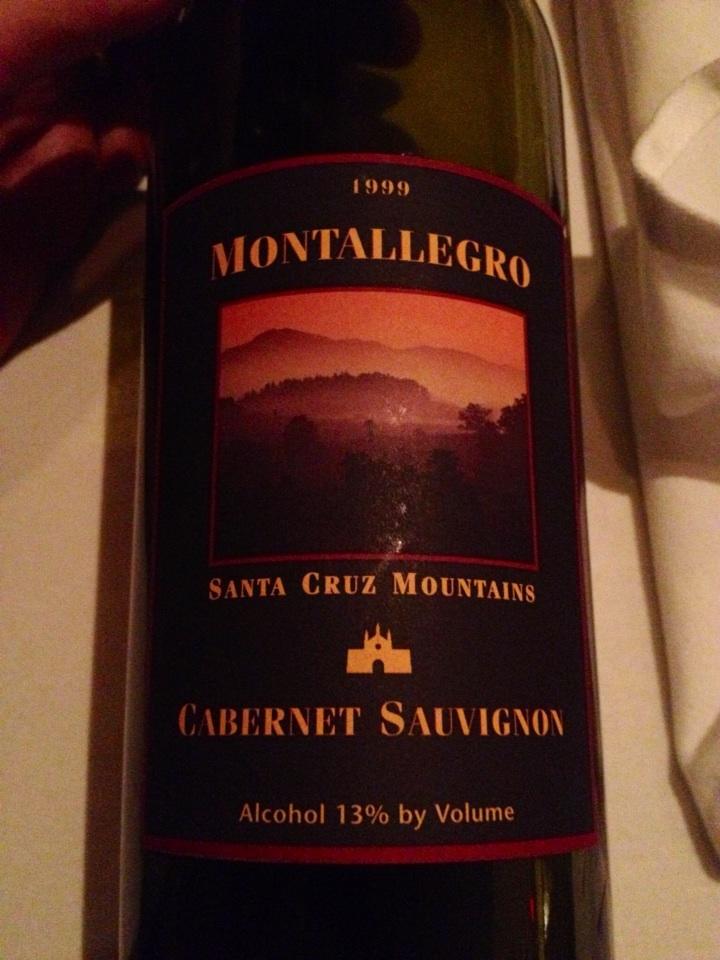They say the best way to make a small fortune in the wine business is to start with a large one. Kevin Harvey certainly began that way; after successful careers first as a software entrepreneur and then as a venture capitalist he founded Rhys Vineyards to explore his love of Pinot Noir. However his amazing, vibrant wines quickly gained a near-cult following and the winery has steadily grown in both size and reputation.
The Rhys label is reserved solely for the wines from the estate vineyards, mostly located in the Santa Cruz Mountains. A sister label, Alesia, is used for wines made from purchased fruit, which mostly comes from vineyards in Sonoma.
Last November I attended a blind tasting of Alesia and Rhys wines. The event, organised by local wine aficionado Ross Bott, featured a vertical of Alesia Sonoma Coast Pinots alongside an assortment of other Alesia and Rhys wines. Each taster ranked the wines in order of preference and an overall ranking was calculated.
2004 Alesia Sonoma Coast Pinot Noir
This had a lovely savoury nose, with
smoke and cherry notes. On the palate it was deliciously complex; lots
of fruit, earth and herbal notes, continuing to develop in the glass. The finish was long, with just a hint
of bitterness. 93
This was the group's overall #1 wine, and my #2
2006 Alesia Sonoma Coast Pinot Noir
The nose on this was odd, with ash,
campfire and earth. The acidity showed on the palate, with earthines and
some dried cherry/cranberry notes, and bitter tannins on the finish.
Although some of the tasters clearly enjoyed it there was some debate as
to whether it was corked; I took the remains of my pour home and found
that after an hour or so it had become undrinkable. I rated it 7th,
which tallied with the rest of the group. No rating, since it was
corked.
2007 Alesia Sonoma Coast Pinot Noir
This had a dusty green pepper/jalapeño note to the nose which I didn't care for. The green note showed up on the palate, along with some cherry and Dr Pepper flavours. The finish also had a bitter, green note to it. 85. My 8th place, as well as the group's.
2008 Alesia Sonoma Coast Pinot Noir
There was an odd, slightly artificial note to the nose which reminded me of some kind of air freshener. On the palate there was some rustic brambly fruit, earthy cherry and herbal notes, with a nice finish. 90.
This was the group's overall #3, but I had it 6th, mainly due to the odd note on the nose.
2006 Alesia Falstaff Road Pinot Noir, Sonoma Coast
Bright nose of maraschino, oregano and orange.
More fruit than most of the others, with cherry, cranberry and cola notes. Lots of vanilla
oak on the finish. 91
Both the group's and my 4th place
2004 Alesia Kanzler Vineyard Pinot Noir, Sonoma Coast
A savoury, plummy nose led to a much sweeter and richer wine than the others, with lots of fruit and an oaky, almost saccharine finish. I really liked it at first and initially had it ranked #1 but after retasting it slipped to third place. The group's overall #5; I suspect this was because some of the tasters in this particular group really don't care for the fruitier style of Pinot. 92
2008 Rhys Alpine Vineyard Pinot Noir, Santa Cruz Mountains
Noticeably darker in colour than the others. The nose had black fruit and smoke, flavours of black cherry, dry leaves and, forest floor; lots of complexity and a nice, long finish.
Initially I ranked it 3rd, but as it got more air it continued to develop and evolve; in the end I scored it 95 and rated it #1 - the group had it as their second place.
2006 Rhys Family Farm Vineyard Pinot Noir, Santa Cruz Mountains
Nose showed dried cranberry and herbal notes. Lots of earthy, rustic fruit; more developing with time.
Chewy, oaky tannins on the finish. I gave it 90 points and rated it 5th; overall the group ranked it 6th.















